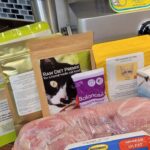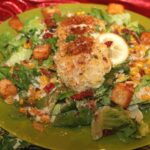Fructose, a simple sugar, is naturally present in various fruits, vegetables, and honey. Understanding “What Foods Are Fructose Found In” is crucial for individuals managing fructose intolerance or those simply aiming to make informed dietary choices. This guide provides a detailed overview of fructose sources and practical tips for managing fructose intake.
Fructose intolerance, also known as fructose malabsorption, occurs when the digestive system struggles to properly absorb fructose. This can lead to uncomfortable symptoms such as stomach pain, bloating, diarrhea, and gas. Identifying foods high in fructose and making appropriate dietary adjustments can significantly improve these symptoms.
Common Foods High in Fructose
While fructose is naturally occurring, the levels vary significantly across different food groups. Here’s a breakdown of foods known to contain higher amounts of fructose:
-
Fruits: Certain fruits are particularly high in fructose. These include:
- Apples
- Pears
- Watermelon
- Fruit juices (especially apple and pear juice)
-
Vegetables: While most vegetables have relatively low fructose levels, some exceptions exist:
- Asparagus
- Peas
-
Sweeteners: Added sugars are often a major source of fructose in the diet:
- Honey
- High-fructose corn syrup (HFCS): A common ingredient in many processed foods and beverages.
- Agave syrup
- Invert sugar
- Maple-flavored syrup
- Molasses
- Palm or coconut sugar
- Sorghum
Foods with Lower Fructose Levels
Individuals with fructose intolerance may be able to tolerate certain foods with lower fructose content in small quantities, especially when consumed with meals. These foods include:
- Grapes
- Blueberries
- Strawberries
- Carrots
- Green beans
- Lettuce
Decoding Food Labels: Identifying Hidden Fructose
Carefully reading product labels is essential to avoid hidden sources of fructose. Pay close attention to ingredient lists and be on the lookout for:
- Fructose
- High-fructose corn syrup
- Agave syrup
- Honey
- Invert sugar
These ingredients are often used in processed foods, including:
- Sodas and sweetened beverages
- Candies and sweets
- Baked goods
- Breakfast cereals
- Condiments (e.g., ketchup, salad dressings)
- Processed snacks
Tips for Managing Fructose Intake
- Limit high-fructose foods: Prioritize lower-fructose alternatives where possible.
- Eat smaller portions: If you choose to consume high-fructose foods, do so in moderation.
- Combine foods: Eating high-fructose foods with other foods may improve tolerance.
- Read labels carefully: Be vigilant about identifying hidden sources of fructose in processed foods.
- Consult a professional: A registered dietitian can provide personalized guidance on managing fructose intake and ensuring nutritional needs are met.
Seeking Professional Guidance
Managing fructose intolerance can be complex. Consulting a registered dietitian or healthcare professional is highly recommended. They can help you:
- Create a personalized eating plan tailored to your specific needs and tolerance levels.
- Identify hidden sources of fructose in your diet.
- Ensure you are getting adequate nutrition while limiting fructose intake.
- Monitor your symptoms and adjust your diet accordingly.
By understanding “what foods are fructose found in” and implementing appropriate dietary strategies, individuals with fructose intolerance can effectively manage their symptoms and improve their overall well-being.

